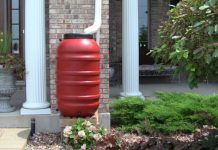MY TURN with Tom Cesarini
For teens, the summer season is often associated with carefree days of family vacations, part-time jobs, and hanging out with friends. Shelving the schoolbooks and curbing academic learning during the summer, however, can create a significant learning loss that can potentially affect students for years. It’s called the “summer slide.”
MY TURN with Tom Cesarini
For teens, the summer season is often associated with carefree days of family vacations, part-time jobs, and hanging out with friends. Shelving the schoolbooks and curbing academic learning during the summer, however, can create a significant learning loss that can potentially affect students for years. It’s called the “summer slide.”
The term “summer slide” was born from a longitudinal study conducted by Johns Hopkins University researchers who studied and tracked student academic abilities throughout the school year. The study identified the loss of knowledge over summer break when the students returned the following year. Subsequent to this study, other organizations have conducted research and have found the following:
On average, 2.5 months of grade-level equivalency in math computational skills are lost during the summer.
Approximately one month of reading and spelling abilities are reduced, particularly for low-income students who may not have resources or support to continue reading over the summer.
Summer slide can affect students in high school, college and beyond.
Summer-learning loss is a chronic problem as it can be cumulative, possibly resulting in students performing below their grade level.
Low-income students suffer the biggest impact with lower test scores and higher dropout rates.
Only nine percent of 48 million American students attend summer school, resulting in more than 90 percent of students experiencing summer-slide loss.
Summer slide may be attributed to as much as 85 percent of reading achievement gaps between low-income students and their more affluent peers.
The effects of summer slide can be devastating for students at all grade levels, as well as for youth from lower income households—thus widening further the achievement gap. School-age care, summer camps, and enrichment programs can be expensive—on average $225 a week per child. Therefore, it can be cost-prohibitive for families to enroll in learning programs in the summer.
There is a financial impact to schools as well. Teachers can spend between four and six weeks re-teaching materials when students return from summer break. One study revealed that re-teaching forgotten material when students return to school after the summer costs more than $1,500 per student each year, or more than $18,000 over the course of a K-12 career. We can save on this cost – or at least close this gap – if our schools and the community at large can work to prevent the negative effects of summer slide.
What Parents and Schools Can Do
While many students have limited access to quality, relevant summer programs, there are many things parents, educators, and the community at large can do to be a part of the solution for youth and teens:
Read! Embrace and share the joy of reading. Visit your local library and check out some books that are of interest to your teen and set summer reading goals. If you have books you can donate, consider providing to a neighbor or a school in need of support.
Bring academic concepts to the real world! Big dividends can result from giving high school students the chance to solve real-world challenges by applying what they have learned in the classroom during the school year. Organizing a fundraising drive for a neighborhood nonprofit or creating a plan to promote a youth event or center through social media may be great ways to build upon student knowledge, embrace a passion, and create a solution for a social challenge.
Cook!
Culinary learning can be one of the best and fun ways to engage in reading and math, as well as hone a life skill.
Garden!
Start a garden to learn horticulture.
Trip!
Go to a museum, the theater, a zoo or a park and make it a fun, educational experience with scavenger hunts or trivia about the destination you are visiting.
Library!
Libraries aren’t just for reading anymore. Your local library now has robotics classes, chess clubs, gaming rooms, book clubs, exercise classes and much more!
Road trip!
Incorporate educational audio books on your summer road trip. Plan stops at national parks and museums along the way.
Volunteer!
Provide a ride or help with transportation to get a child to a summer program. Donate your time and talent to a summer program or nonprofit that helps kids during the summer.
There is no simple answer to the problem of summer slide, but what is clear is that we all need to work together to develop solutions and re-evaluate old ways of doing new things. Perhaps the traditional nine-month school year needs to be re-evaluated and upgraded like we update our smart phones. The traditional school year was developed at a time when most families worked in agriculture and was based around the farming season. Summer school is not for bad students; it is an asset to ensure that our students are successful in an increasingly competitive global landscape.
Summer Learning Day is July 13, 2017. What is your family’s summer plan?
Tom Cesarini is the chief business officer of The School for Entrepreneurship & Technology (SET High) in San Diego. SET is the first high school in California based on developing the entrepreneurial mindset.














